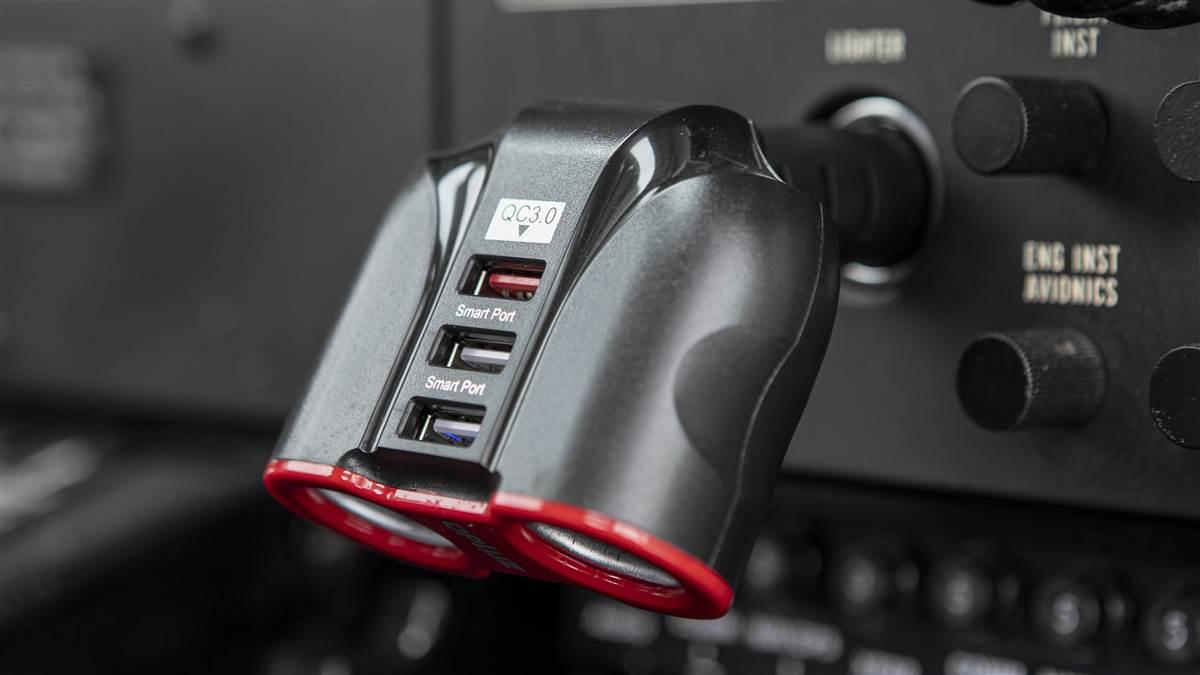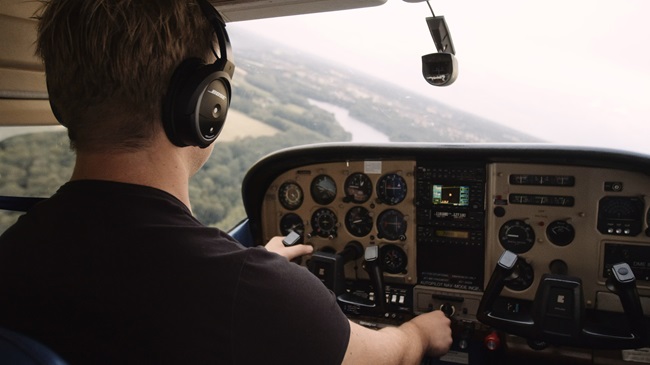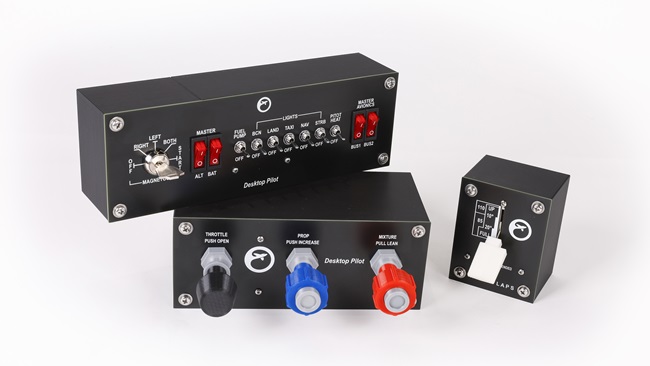What Am I? Power ports
Keeping your technology charged

Photography by Chris Rose
But the need to run your technology continuously during a flight has the predictable effect of draining the batteries.
Aircraft cockpits today increasingly feature USB power ports. These reduce the 14- or 28-volt current from the aircraft’s electrical system to a lower DC voltage that can safely charge personal technology. For a power port to be permanently installed in the aircraft, it should have FAA technical standard order (TSO) approval, and the installation will be protected by a circuit breaker. Aircraft-grade power ports are shielded, which means you shouldn’t experience interference or static in your aircraft radios when the power port is in use. Many power ports have two USB slots, and a rating of 2.5 amps should allow a port to charge a full-size iPad while the device is in use.
Older aircraft may have a cigar lighter. This is a cylindrical receptacle about 3/4 inch in diameter that also provides power to portable devices. (A cigar lighter is the same size as the cigarette lighter that used to be common in cars, and there’s no clear reference as to why many older aircraft used the cigar lighter term.)
Note that some cigar lighters might not provide power. Some initially were installed without circuit-breaker protection, and a 1979 airworthiness directive required that the cigar lighters in a large number of single-engine Cessna airplanes either be disconnected or connected to a breaker (removing them was optional). In those pre-personal-technology days, many aircraft owners opted to simply disconnect the lighter, and some have never been reconnected.
You might be able to purchase a USB adapter for a cigar (or cigarette) lighter, but this type of solution may be less reliable. Vibration eventually can break the electrical contact, and charging will stop—and portable units like these, if not designed for aircraft use, are more likely to cause radio interference. Keep in mind that if the unit is not designed to handle 28-volt current, using it in an aircraft with a 28-volt system will ruin the adapter and could damage the connected electronics.



